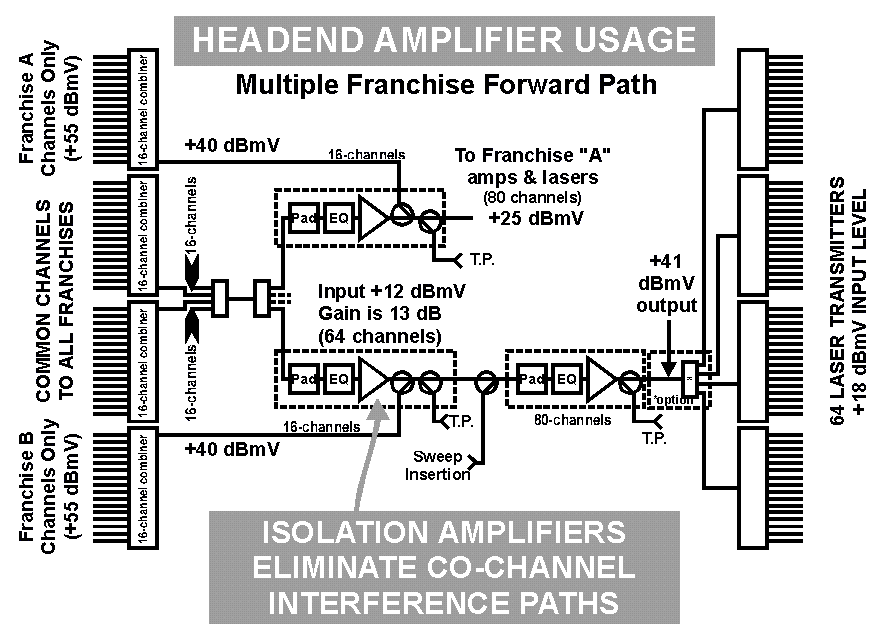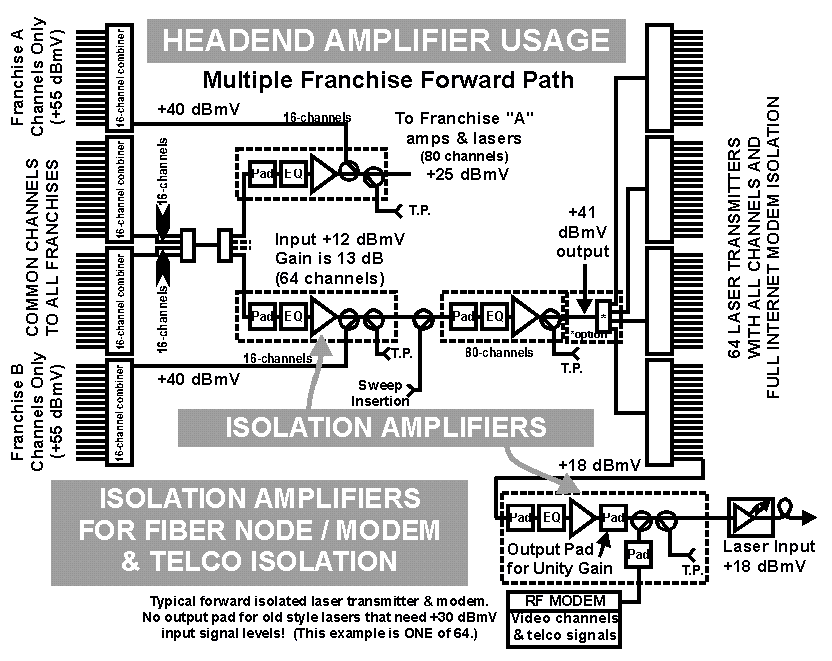| The final headend forward path diagram shown in Figure 4 is similar to Figure 3, but
adds a final layer of isolation at the node level. In this section, each and every
node is isolated from all other nodes to prevent RF modem and telephone signals on the
same frequencies from interfering with similar signals on other fiber nodes. The
gain of these final isolation amplifiers is chosen based on the required input level to
the laser transmitters. Older lasers that require +30 or +32 dBmV input signals
will use either 13 dB or 17 dB gain isolation amplifiers. The more modern lasers
that require input in the range of 17 dBmV will only use the 13 dB gain models with an
OUTPUT PAD between the hybrid and the combining directional coupler. When this is
the case, the pad value should be chosen to assure that the actual input and output levels
at the hybrid are in the "sweet spot". That level is typically at 3 to 5
dB above the noise figure of the hybrid. This level should insure a good composite triple
beat performance. If CTB is not a major concern, the signal level may be raised to
add to the carrier-to-noise ratio. Since this is a single-stage amplifier, a balance
between acceptable CTB and C/N must be considered. |
| < NEXT
PAGE > |
|
|

